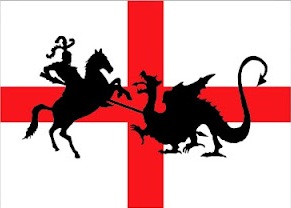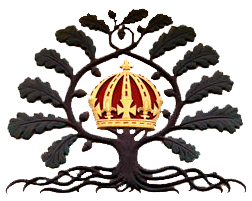A Reader Writes. . .
 Embryo Parson Posted on
Embryo Parson Posted on  Monday, September 23, 2024 at 12:42PM
Monday, September 23, 2024 at 12:42PM concerning this post:
"I watched the video but was not overly impressed. The one constant I see when the Eastern apologists discuss icons is that they almost never use Scripture to justify their position. They almost always resort to philosophy and Greek metaphysics. An occasional nod to a Scripture verse may be made but only to stretch it way beyond what it is saying, such as trying to justify the bowing and reverencing of images with the fact that God ordered certain images made in the Temple and on the Ark.
It always goes back to authority and "What says the LORD"? There is absolutely nothing in Scripture that would justify what the Eastern "orthodox" have developed in terms of iconographic theology. But they simply don't care. Mind you I have no problem with icons per se nor even showing them respect. But the "orthodox" have gone to such extremes as to pretend that they are necessary for salvation and for safeguarding the doctrine of the Incarnation. There is even an akathist service TO the Kursk Root icon. Are these extremes Apostolic in nature? Are they Biblical? I doubt it."
My answer:
The argument for the making and veneration of icons is a theological argument, yes, but so is the argument on which the Nicene Creed is based. Neither the word "trinity" nor "homousios" is to be found in the New Testament, yet we use these theological terms to summarize what we believe to be the biblical teaching about the relation between the Father, the Son and the Holy Ghost. Fr. Stephen DeYoung drives this point home compellingly near the end of his debate with Gavin Ortlund, who essentially argues as you do.





Reader Comments (5)
One could point out, though -- as Ortlund does -- that unlike the situation with the Trinity, it is not only the case that the language does not appear in Scripture; rather, the early church fathers who speak about images are largely positively opposed to them.
It seems untenable, then, to argue -- as the EO do -- that icons are actually a *necessary* part of Christianity (and this was your correspondent's point, I take it). There are no examples of early church fathers railing against Trinitarianism, but plenty of examples of their opposition to any use of images. It seems hard to avoid the conclusion that, at least in some parts of the early church, this was no part of primitive Christianity, and cannot be made mandatory.
Neither "Trinity" nor "homoousios" appears in Scripture either, but those terms are now part of our doctrinal orthodoxy. As to the few counterexamples from Church Fathers on the use of images you mention, that's not uncommon. Sometimes the establishment of patristic consensus takes time.
If you mean by "mandatory" the veneration of icons, well, even the Orthodox don't seem intent on forcing anyone to bow to and kiss a holy icon. If by "mandatory", however, you mean the 7th Ecumenical Council being part and parcel of the Catholic faith, well then, yes, that's mandatory for anyone who believes that II Nicaea was indeed an ecumenical council.
The Seventh Ecumenical Council did not just say that venerating icons was OK; it anathematized anybody who did not do so.
Yes, I'm aware that Trinity and Homoouisous are not Scriptural terms; but, as I said, the theology they describe does not fly directly in the teeth of extremely explicit condemnations by church fathers. Quite simply, if the maximalist iconic theology of the seventh council is correct, then those fathers were not part of the Catholic faith.
The anathemas were perhaps a bridge too far, as other anathemas have been. You have to understand that they were written in the theological passion of the time.
But the fact remains that II Nicaea is an ecumenical council for Catholic Christians. The theology of icons there has been set in stone, whether one wants to accept that or not. The only question is whether or not you are a Catholic Christian. Even the Assyrian and Oriental Orthodox Churches seem to have some appreciation for it, though they do not formally accept all seven councils.
Well, and the Assyrian church does not use icons.
Anyway, there are many interesting issues here, but as I composed a reply in my mind, I realized each one of them could go far down a rabbit hole, and I'm not sure if you want your comment section used for further discussion on these points. If I ever have the privilege of sitting down with you over food or beer, I would love to discuss it!